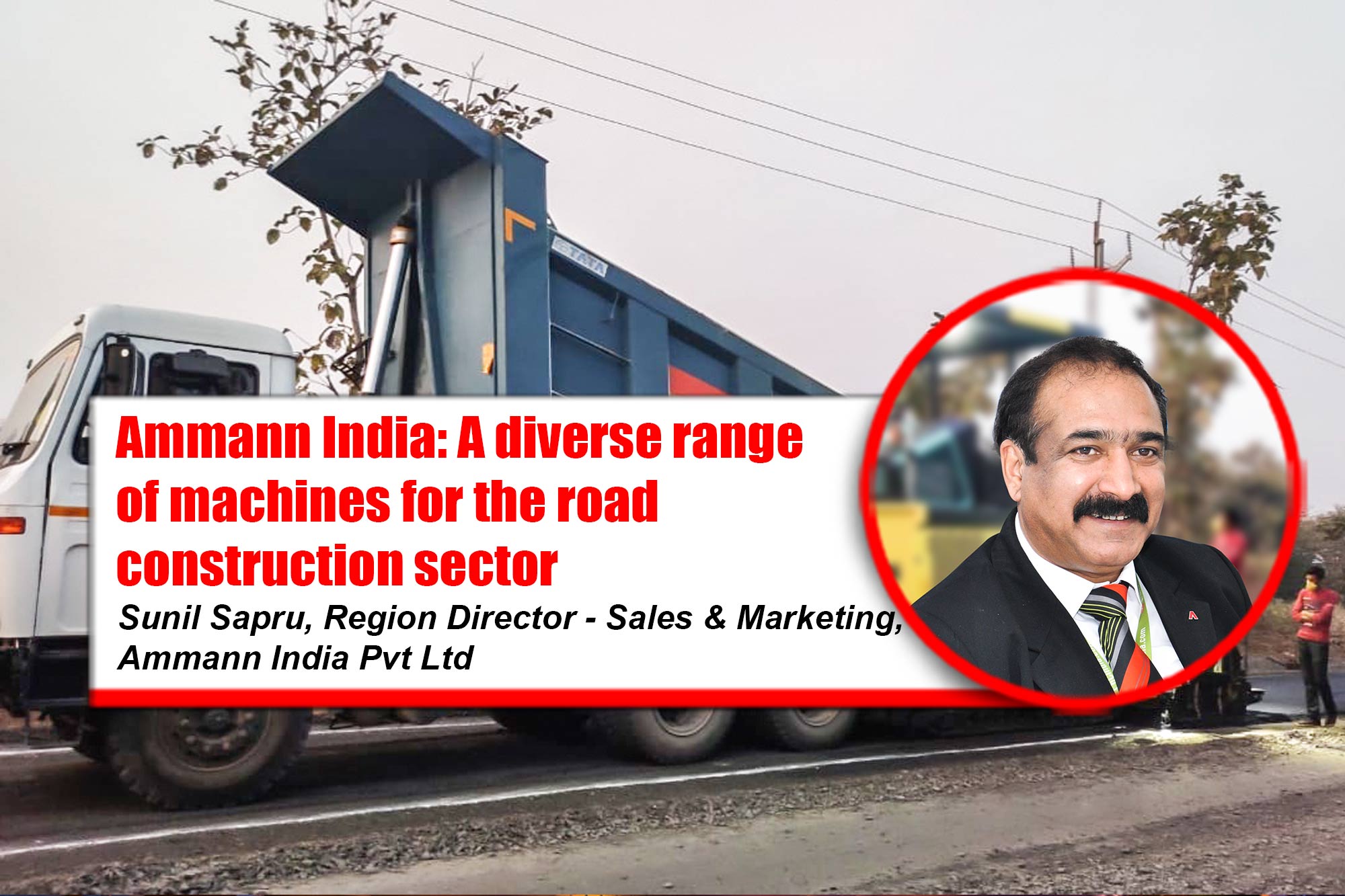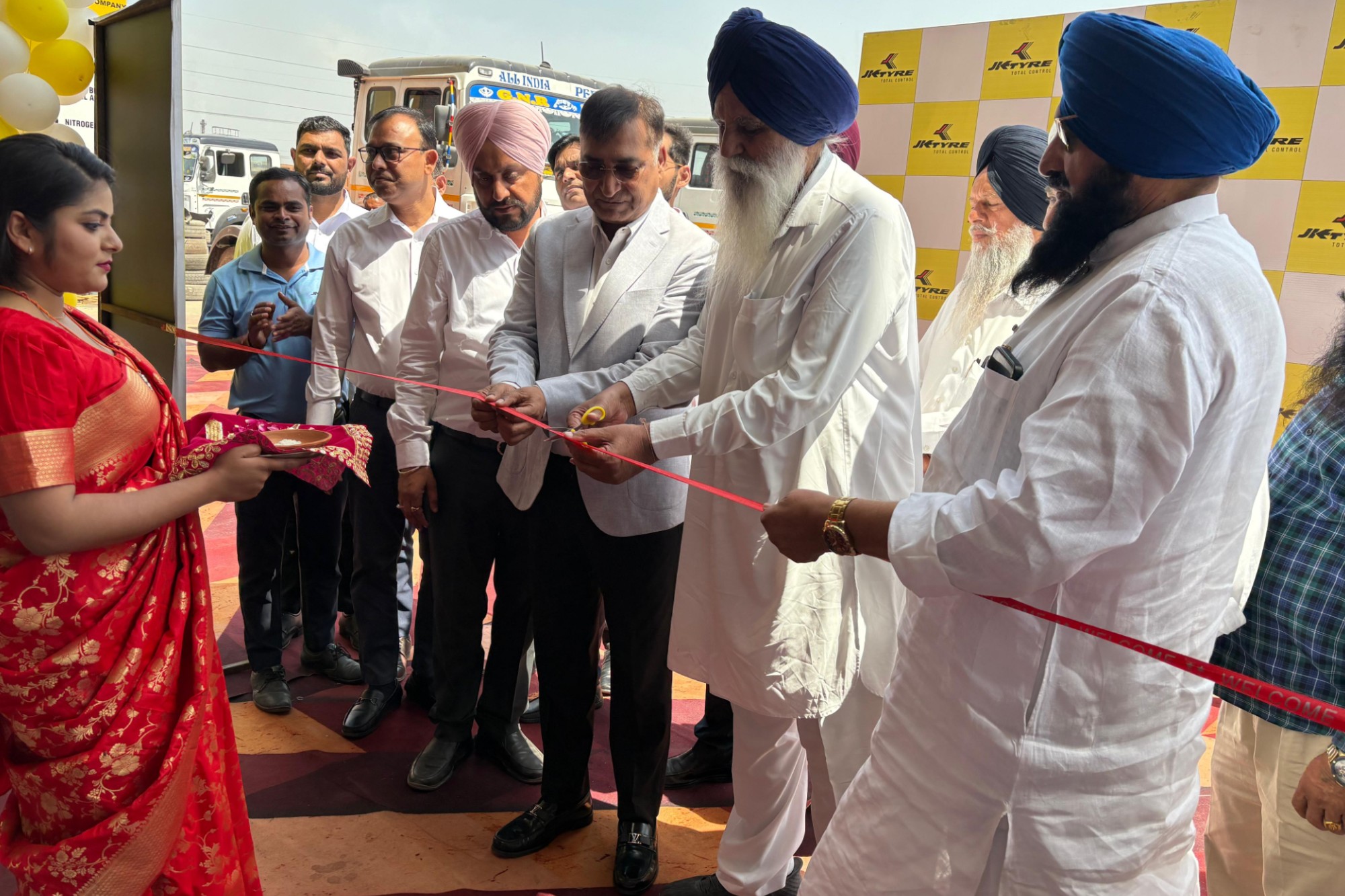Ammann India: A diverse range of machines for the road construction sector
By Edit Team | June 12, 2020 7:17 am SHARE

We manufacture both mechanical and sensor pavers customized to different widths needed for different layers like WMM, Base course, wearing course as well as dry lean concrete says Sunil Sapru, Region Director – Sales & Marketing, Ammann India Pvt Ltd.
How important is the role that subgrade material plays in compaction?
Subgrade/Formation level is one of the essential structural elements of the pavement whose main function is to support the upper layers of the pavement and to provide the good drainage facility to the infiltrating rainwater.
In order to provide maximum structural support (as measured by California Bearing Ratio (CBR), Resistance Value (R-value), Resilient Modulus (MR)) a subgrade soil must be compacted to an adequate density. If it is not, the subgrade will continue to compress, deform or erode after construction causing pavement cracks, ruts and deformation. The specification for compaction of the subgrade materials has conventionally been set based on Proctor Compaction test conducted on a particular subgrade material. The specification is given in terms of Optimum Moisture Content (OMC) at which the maximum dry density (MDD) is achieved.
If the structural support offered by the in-situ compacted subgrade is estimated to be inadequate there are three options to increase the load bearing capacity.
• Stabilization- Lime/Cement is used for high/low plastic soils respectively. Emulsified asphalt can be used with sandy soils.
• Over-Excavation- Replace poor load bearing situ subgrade with better borrowed load bearing fill.
• Add a base course & a subbase course over the subgrade.
What are the advantages of automatic compaction control, how can it catalyse the process of road construction?
Automatic Compaction Control is the future for Indian roads. Ammann Compaction Expert (ACE) has been continually improved since its introduction in 1998. It automatically adjusts amplitude and frequency based on ground characteristics in single-drum rollers, light and heavy asphalt rollers and vibratory plates.
ACE provides compaction measurement, automatic control and documentation system. It continuously adjusts frequency and amplitude depending on compaction measurements. It delivers highest compaction efficiency, minimizes the risk of over compaction. It can utilize all major manufacturers’ GPS products to provide mapping and operator guidance. As MORTH (Ministry of Road Transport and Highways) eyeing to increase the pace of km/day completion gradually it meets the benefits of this technology like reduce the number of passes, savings of fuel , labour and machine wear. It helps to ensure proper compaction is achieved and extends the life of the compacted material and structures by providing a homogenous surface without weak spots.
One step forward we introduced ACEPLUS which combines ACE measurement and control system with satellite navigation system which accurately assigns the measured compaction values to the position coordinates and time. It increases process reliability and integrates quality control measures in the work process. We are confident to witness Automatic Compaction Control soon on Indian roads to have best quality and faster pace of completion.
Could you tell us about the dangers of over compaction?
Due to lack of Automatic Compaction Control, over compaction happens more than most people realise. During compaction of loose fill material, the machine’s energy is directed and consumed by the material. Over compaction will cause the soil to break down with excess energy which reduces its support capability. Too much energy results in fracturing and shifting the soil threatening to undermine its bearing capacity. The changed material has a lower density because the new particles are smaller. This will create low bearing capacity which may lead to cracks and deformation in later stage. Moreover, it causes waste of machine power, fuel, wearing of parts due to upward thrust or jump and manpower which is undesirable.
What are some of the equipment you offer for compaction?
Amman has the largest range of compaction equipment starting from light compaction used for open, small and tightest jobsites. It ranges from Rammers, Vibratory Plates, Walk-Behind Rollers, Add-On Compactors and Trench Rollers. For larger jobsites we have wide ranges of Soil Compactors, Tandem Rollers and Pneumatic Rollers as well required for different layers of compaction.
What are some of the equipment you offer for paving?
Ammann India is considered to be one of the largest Road Construction Equipment manufacturers having facility at Mehsana, Gujarat. We manufacture both mechanical and sensor pavers customized to different widths needed for different layers like WMM, Base course, wearing course as well as dry lean concrete. Mechanical pavers are widely used in construction of Rural Roads which consists 95 per cent of total Indian roads. With the recent, our honorable Prime Minister Narendra Modi’s dream of “Vocal to Local”, we have local sensor pavers which can pave from 1.5m to 10m to support Indian Infrastructure.
What are the controls in place in your equipment to ensure paving at a uniform forward speed?
The movement of paver in uniform forward speed is very important to achieve proper pre-compaction, thickness, levels and surface without undulations. To achieve this we need to have continuous material feeding throughout the width of the screed and required quantity. This proper material feeding is ensured with the paddle type sensors/ultrasonic sensors in auger and conveyor tunnels. For travel we have two independent axial piston pumps with proportional solenoids, in which the currents of the proportional coils are controlled by the electronic drive controller. The drive controller takes the input signals of the machine speed potentiometer, steering position, speed sensor of the drive motors, paving/travel mode, etc and gives required output to the drive pump coils. The above ensures uniform speed of the machine throughout the paving.
What is your forecast on the roads and bridges segment for the year 2020?
Currently, the economic situation is a serious cause for concern with RBI predicting a negative GDP growth for FY 2020-21. However, the silver lining is that the central & state Governments are committed to building road infrastructure which is one of the pillars of economy and also creates a large number of jobs. The optimistic forecast is that at least 50 per cent of the planned projects will be awarded in FY 2020-21. How is the overall economic stimulus of Rs 20 lakh crore prove to be a game changer in the current scenario? The economic stimulus is focused on alleviating the poor, immigrants and farmers. The stimulus package prima facie does not appear to be a game changer for road sector. But we need to wait and watch for collateral benefits to the road sector on account of the stimulus package.
Cookie Consent
We use cookies to personalize your experience. By continuing to visit this website you agree to our Terms & Conditions, Privacy Policy and Cookie Policy.























































